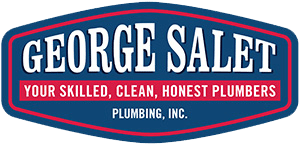
Your home’s plumbing system plays a crucial role in delivering clean water and safely removing waste, but many homeowners don’t fully understand how it works. Knowing the basics of your plumbing system can help you detect issues early, maintain efficiency, and avoid costly repairs. From water supply lines to drainage systems, each component must function properly to keep your home running smoothly.
Plumbing systems in San Francisco homes can vary in age and complexity, with many older properties featuring unique layouts and materials. This guide will help you understand the key components of your home’s plumbing, common issues to watch for, and essential maintenance tips. At George Salet Plumbing, we believe that informed homeowners are better equipped to care for their plumbing systems.
Key Components of Your Home’s Plumbing System
- Sinks and Faucets: Kitchen and bathroom sinks are connected to both supply lines and drainpipes, meaning issues like leaks, low water pressure, or slow drainage can stem from multiple sources.
- Toilets: Toilets have a fill valve, flapper, and flush system that regulate water flow. A toilet that runs constantly is often caused by a faulty flapper that doesn’t seal properly, wasting gallons of water.
- Showers and Bathtubs: These fixtures rely on both hot and cold supply lines as well as proper drainage. If you experience low water pressure in your shower, it may be due to mineral buildup in the showerhead, a partially closed shut-off valve, or an issue with your water heater.
- Water Heaters: Your water heater is one of the most critical components of your plumbing system. If you notice fluctuating temperatures or rusty water, it could indicate sediment buildup in the tank or corrosion inside the unit.
- Dishwashers and Washing Machines: These appliances connect directly to your plumbing system and often share drain lines with sinks. If your dishwasher isn’t draining properly, a clog in the garbage disposal or drain hose may be the cause.
Water Supply Lines and How They Work
Your home’s water supply system delivers clean, potable water from the city’s main supply into your plumbing fixtures. In San Francisco, most homes receive water from the San Francisco Public Utilities Commission (SFPUC), which sources water from the Sierra Nevada mountains.
Water enters your home through a main supply line, typically located underground. This line connects to the water meter, which measures usage, and then branches off to different fixtures such as sinks, showers, and appliances. The water pressure is regulated by the city and can be adjusted via a pressure-reducing valve.
Older homes may still have galvanized steel pipes, which are prone to corrosion, while newer homes often use copper or PEX piping, which is more durable and resistant to leaks. Knowing what type of piping your home has can help you plan for maintenance or potential replacements.
Drainage and Wastewater Removal
Once water is used, it needs to exit your home through the drainage system, which consists of drainpipes, vent pipes, and a connection to the municipal sewer or a septic system. This system relies on gravity to move wastewater away, preventing backups and ensuring proper sanitation.
Each drainpipe is equipped with a P-trap, a curved pipe that holds a small amount of water to block sewer gases from entering your home. Vent pipes allow air to circulate through the system, maintaining proper drainage flow and preventing pressure buildup.
If drains become slow or start making gurgling noises, it may indicate a partial blockage or ventilation issue. In severe cases, a sewer line clog could cause wastewater to back up into your home, requiring immediate professional attention.
Signs of Plumbing Issues and When to Call a Professional
Even a well-maintained plumbing system can develop problems over time. Recognizing the early warning signs of plumbing issues can help prevent costly repairs and water damage.
Low Water Pressure and Leaks
If you notice a sudden drop in water pressure, it could indicate a leak, pipe corrosion, or sediment buildup in your plumbing lines. Leaks, even small ones, can cause extensive damage if left untreated, leading to mold growth and higher water bills. Common leak sources include dripping faucets, running toilets, and hidden pipe cracks. If you suspect a leak but can’t locate it, a professional plumber can perform a leak detection test to identify the issue before it worsens.
Slow Drains and Sewer Backups
A slow drain might seem like a minor inconvenience, but it can indicate a clogged pipe or a larger sewer line problem. If multiple drains in your home are slow, you may have a blockage deep in your plumbing system. Gurgling noises, foul odors, or water backing up into sinks or tubs are warning signs of a potential sewer line issue. In these cases, professional drain cleaning or hydro-jetting may be needed to clear the pipes safely and effectively.
Water Heater Problems and Inconsistent Temperatures
If your water heater is delivering lukewarm or cold water, making strange noises, or leaking, it may need servicing. Sediment buildup inside the tank can reduce efficiency, causing higher energy bills and uneven water temperatures. Regular flushing and maintenance can extend the life of your water heater, but if the unit is over 10 years old, it may be time to consider a replacement. A plumber can inspect your system and recommend the best solution for your needs.
Basic Plumbing Maintenance Every Homeowner Should Know
Proper maintenance can help prevent many common plumbing issues and keep your system running smoothly. Here are a few essential maintenance tasks every homeowner should follow:
- Inspect for leaks regularly: Check under sinks, behind appliances, and around toilets for signs of moisture or pooling water.
- Prevent drain clogs: Avoid flushing anything other than toilet paper, and use drain strainers in sinks and tubs to catch hair and debris.
- Flush your water heater: Drain and flush the tank at least once a year to remove sediment and improve efficiency.
- Check water pressure: Use a water pressure gauge to ensure your home’s pressure is within the recommended range (typically between 40 & 60 psi).
- Test shut-off valves: Ensure that you can easily turn off water valves in case of an emergency, such as a burst pipe.
Trust George Salet Plumbing for Expert Service
While routine maintenance can prevent many issues, some plumbing problems require professional attention. Whether it’s a stubborn clog, water heater failure, or a complex pipe repair, having an experienced plumber on call can save time and frustration.
Professional Plumbing Services in San Francisco
For reliable plumbing services in San Francisco, trust George Salet Plumbing. Our team has decades of experience diagnosing and repairing plumbing issues, from minor leaks to major system overhauls. Contact us at 415-234-0733 today or reach out online to schedule an inspection or service appointment and keep your home’s plumbing running smoothly.
